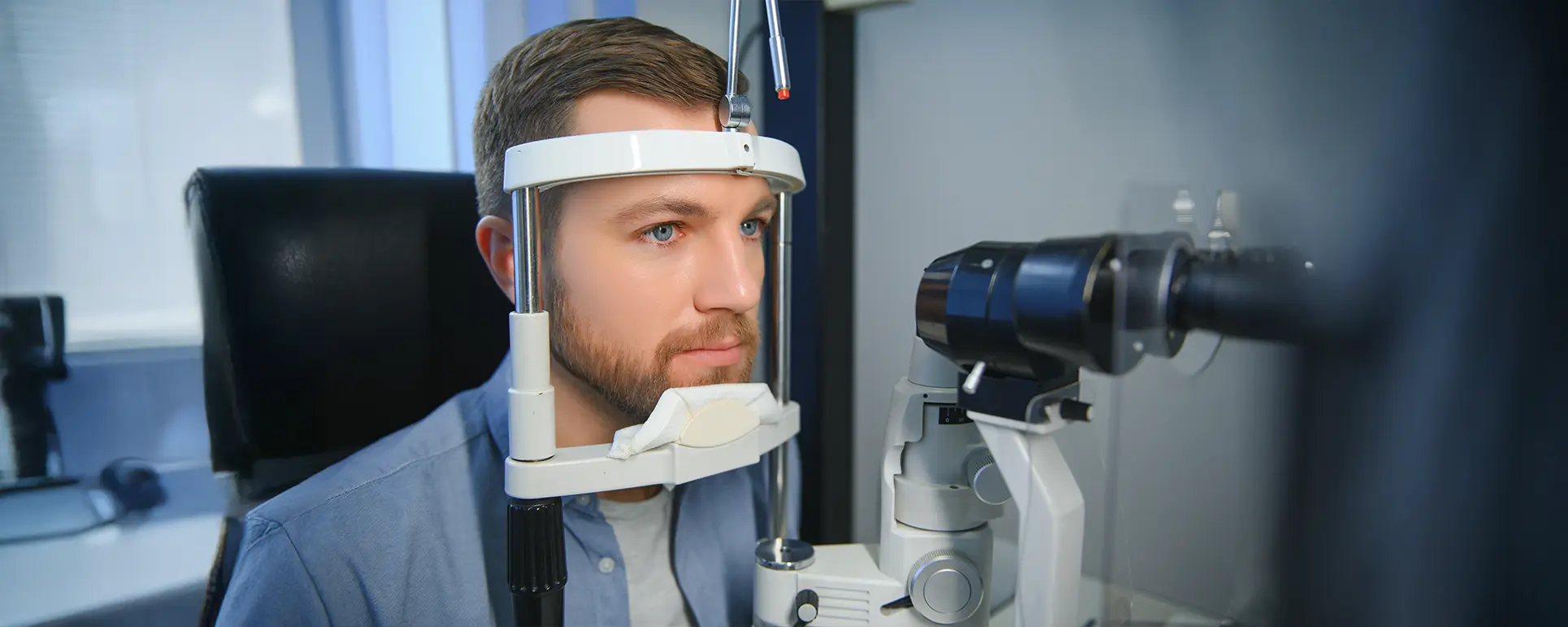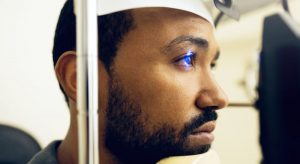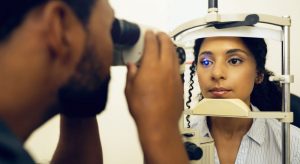Laser Eye Surgery Enhancement: Do You Need a Touch-Up?

Enhancements are not a sign that your original procedure failed. They’re simply a way to fine-tune your results if your eyes change over time which is perfectly normal.
In this article, I’ll explain what laser eye surgery enhancements involve, who might need one, how surgeons decide if you’re suitable, and what recovery looks like. By the end, you’ll know exactly when a touch-up might make sense and whether it’s something worth considering for your own vision.
What Is a Laser Eye Surgery Enhancement?
A laser enhancement is a secondary procedure performed after an initial LASIK or LASEK treatment. The goal is to refine your vision by correcting small refractive errors that may have developed after your first surgery.
Enhancements are typically much quicker and use the same laser technology as your original procedure. In most cases, results are excellent, and recovery is easier than the first time around.
Why Do Some Patients Need Enhancements?
Most people enjoy clear, long-lasting vision after laser eye surgery many for decades. But your eyes can still change naturally, just like the rest of your body.
Here are the most common reasons why you might need a touch-up:
1. Prescription Regression
Regression means your prescription shifts slightly after surgery. This doesn’t mean your surgery “wore off”; it simply means your eyes have changed.
Common reasons include:
- Higher prescriptions before surgery
- Younger age at time of treatment
- Slight undercorrection
- Natural healing variations
Minor regression can be easily corrected with an enhancement.
2. Age-Related Vision Changes
As you get older, it’s completely normal for your vision to change especially after 40 when presbyopia (near-vision difficulty) begins.
Enhancements don’t fix presbyopia, but they can refine your distance vision so you rely less on glasses.
3. Astigmatism Adjustment
Sometimes, very small amounts of residual astigmatism remain after the initial treatment. A quick enhancement can smooth this out and sharpen your vision.
4. Healing Differences Between Eyes
Your eyes don’t always heal identically. One may respond slightly differently to the laser, leaving a mild difference in clarity. Enhancements help balance both eyes for more consistent results.
How Common Are Laser Enhancements?

While the exact number varies, modern laser technology has made enhancements less and less common.
On average:
- LASIK enhancement rates: 2–5%
- LASEK enhancement rates: 3–7%
People with higher prescriptions or stronger astigmatism may have slightly higher enhancement rates, but most never need one.
Signs You May Need a Laser Eye Surgery Touch-Up
Enhancement suitability isn’t based on a “timeline.” Instead, it’s based on the clarity and stability of your vision.
- You might be a candidate if:
- You notice blurred distance vision
- Your night vision seems worse
- You struggle with glare or halos
- You feel one eye sees better than the other
- You’ve noticed decreased visual sharpness
- Your vision has changed after several years
Enhancements are only recommended when your vision has stabilised meaning your prescription is no longer changing.
Who Makes a Good Candidate for an Enhancement?
Surgeons look at several factors to determine if a touch-up is safe and effective.
1. Your Prescription Has Stabilised
This is crucial. Enhancements should not be performed while your vision is still changing.
You’re suitable if:
- Your prescription has remained stable for at least 12 months.
You’re not suitable if:
- Your prescription is fluctuating.
- You’re pregnant or breastfeeding (hormones affect vision).
2. You Have Enough Corneal Thickness Left
Enhancements involve removing a tiny amount of extra corneal tissue. This means your cornea must be thick enough to support another laser treatment.
Surgeons measure this using advanced scans during a suitability assessment.
Suitable:
- Healthy corneal thickness
- Strong corneal structure
Not suitable:
- Thin corneas
- Signs of keratoconus or early ectasia
In unsuitable cases, other treatments may be recommended instead.
3. Your Eye Health Is Good
Your surgeon will check for:
- Dry eye severity
- Corneal scarring
- Infection
- Eye pressure
- Macular or retinal issues
Good overall eye health increases the likelihood of a successful enhancement.
4. The Original Surgery Healed Well
If your cornea healed cleanly after your first surgery, you’re more likely to be suitable for a touch-up.
Enhancements After LASIK vs LASEK: What’s the Difference?

Enhancement procedures differ slightly depending on which surgery you originally had.
Enhancements After LASIK
For LASIK patients, enhancements often involve lifting the original flap created during your first surgery, then applying the laser correction underneath.
Advantages:
- Very quick procedure
- Immediate vision improvement
- Minimal discomfort
Considerations:
- Not always possible if the flap is too old
- Some surgeons may prefer a surface-based enhancement instead
Enhancements After LASEK
Since LASEK doesn’t involve a flap, enhancements are performed as a surface-based laser procedure similar to the original surgery but usually quicker.
Advantages:
- Safe for thin corneas
- No flap risks
- Predictable healing
Considerations:
- Slightly longer recovery (similar to original LASEK)
What Happens During an Enhancement Consultation?

Your suitability appointment is key to understanding whether a touch-up is right for you.
A comprehensive assessment may include:
Corneal Mapping (Topography and Tomography)
To detect thinning, irregularities, or signs of corneal instability.
Corneal Thickness Measurements (Pachymetry)
To ensure there’s enough tissue for another procedure.
Prescription Stability Check
To make sure your vision has not changed recently.
Dry Eye Testing
Because dryness can affect healing and vision clarity.
Pupil Size Measurement
To assess night vision risk.
Retinal Examination
To rule out issues unrelated to the cornea.
What an Enhancement Procedure Is Like
Enhancements are usually straightforward and take much less time than the original surgery.
During the procedure:
- Numbing drops are applied
- A laser corrects the small refractive error
- The treatment typically lasts under 10 minutes per eye
Most patients find enhancements surprisingly easy and comfortable.
What Recovery Looks Like
Recovery depends on whether you originally had LASIK or LASEK.
LASIK Enhancement Recovery
- Vision often improves within 24–48 hours
- Mild dryness or sensitivity for a few days
- You can usually return to work within a day
Restrictions:
- Avoid rubbing your eyes
- Avoid swimming for 1–2 weeks
- Use prescribed drops as instructed
LASEK Enhancement Recovery
- Recovery is similar to original LASEK
- Initial discomfort for 2–4 days
- Vision stabilises over 1–2 weeks
- Full clarity may take a bit longer
Restrictions:
- Avoid exercise for a few days
- Wear sunglasses outdoors
- Follow lubrication and medication schedule
How Long After Surgery Can You Get an Enhancement?
Enhancements are never performed too early. Surgeons typically wait until:
- Vision has fully stabilised
- The eye has healed internally
- Prescription refraction measurements are consistent
Most enhancements happen between 3–12 months after surgery, but some can be done years later.
Are Enhancements Safe?
Yes when performed by an experienced surgeon and with proper assessment.
Enhancement procedures use the same advanced laser technology as your original surgery and carry similar safety profiles.
The biggest risks come from:
- Performing an enhancement too early
- Insufficient corneal thickness
- Untreated dryness
- Undiagnosed eye conditions
This is why choosing a trusted clinic matters. If you’re exploring Laser surgery in London, make sure your surgeon performs a full suitability assessment rather than guessing based on symptoms alone.
Alternatives to Enhancement
If an enhancement isn’t the right option, you still have choices.
Glasses for specific tasks
Small corrections may not require another surgery.
Contact lenses
For patients who can wear them comfortably.
PRK instead of LASIK enhancement
If the LASIK flap is no longer suitable.
Lens-based options
For age-related vision changes, lens replacement may be more effective.
Your surgeon will explain which option delivers the most predictable result.
Do Enhancements Cost Extra?
Costs vary depending on your clinic and the time since your original procedure.
Some clinics offer enhancements within a certain timeframe at no extra charge. Others may charge depending on:
- Complexity
- Time passed since surgery
- Additional aftercare required
Always check your clinic’s policy during consultation so you know what to expect.
FAQs:
- What exactly is a laser eye surgery enhancement (touch‑up)?
An enhancement is a secondary procedure performed after an initial LASIK or LASEK treatment when small refractive errors remain or develop over time. It is not a sign that the original surgery failed but rather a fine‑tuning to optimise your vision if your eyes change slightly, for example due to ageing or slight regression. The enhancement uses the same (or very similar) laser technology as your original surgery and aims to correct any residual prescription in either eye to restore sharper vision. - Why might someone need an enhancement after LASIK or LASEK?
Even though modern procedures achieve excellent results, some patients notice their vision isn’t quite as sharp as immediately post‑surgery. This can happen because of a very small amount of regression (your prescription shifting slightly), age‑related vision changes, residual astigmatism, or uneven healing between the two eyes. Over time, what seemed perfect can feel just a little less crisp, and that’s when a touch‑up may be considered to restore the clarity you expected. - How common are enhancements after laser eye surgery?
Enhancements are relatively uncommon thanks to advances in laser technology and surgical technique. Typical reported rates are around 2‑5 % for LASIK and 3‑7 % for LASEK, though these figures vary depending on patient age, prescription strength, and healing characteristics. The key point is that needing one does not mean your original surgery was unsuccessful it simply means your vision is being fine‑tuned. - How do you know whether you might need a touch‑up?
You might be a candidate for an enhancement if you notice slightly blurred distance vision, increased glare or halos at night, a sense that one eye sees better than the other, or if you’ve noticed a visual change several years after your original procedure. The important thing is that your prescription must have stabilised (no longer changing) before an enhancement can be safely performed. Your surgeon will assess your vision, refraction, and eye health to determine suitability. - What factors do surgeons look at to determine enhancement suitability?
Surgeons look at several key criteria: first, your prescription must be stable for a period (often at least 12 months). Second, your corneal thickness must still be sufficient since enhancements require removing a small additional amount of tissue. Third, your overall eye health (including dry eye status, corneal clarity, absence of infection or scarring) must be good. Essentially, the same rigorous screening you underwent prior to your original surgery applies to the enhancement decision as well. - What’s the difference between an enhancement after LASIK vs after LASEK?
For LASIK patients an enhancement often involves lifting the original corneal flap and applying the laser beneath, which allows a fast recovery often vision improves within 24‑48 hours. For LASEK patients, since the original surface ablation technique didn’t create a flap, the enhancement is also done as a surface‑based laser treatment and tends to involve a slightly slower recovery (similar to your original LASEK). Both procedures are safe but the type of original surgery influences recovery and approach. - What does the recovery period look like after an enhancement?
After a LASIK enhancement most patients experience minimal discomfort, rapid vision improvement (often in one to two days), and can return to work very quickly. After a LASEK enhancement the recovery is slower: you may need to use bandage contact lenses, expect some light sensitivity and mild discomfort for a few days, and vision may stabilise over a week or two. In both cases you’ll follow post‑operative instructions (drops, avoid rubbing eyes, protect from water or dust) to ensure optimal healing. - How long should you wait after your original surgery before getting an enhancement?
You should wait until your vision has fully stabilised and your eyes have completely healed from the initial procedure. Many surgeons recommend waiting at least three to twelve months, though in some cases it may be longer. Attempting an enhancement too early can increase risk of unnecessary treatment or less optimal results if your prescription is still shifting. - Are enhancements safe and do they carry extra risk?
Yes when done by an experienced surgeon in a suitable candidate, enhancements are very safe and carry a similar risk profile to the original procedure. The main risks arise if your cornea is too thin, your eye surface is unstable, or the enhancement is done prematurely before vision stabilises. That’s why a full assessment is essential ensuring you are still a good candidate significantly reduces any added risk. - What alternative options exist if I’m not suitable for an enhancement?
If you are not a good candidate for a laser enhancement (for example due to insufficient corneal thickness or unstable eye surface), alternatives include using glasses for specific tasks (especially near vision), contact lenses if you tolerate them, or considering a different surgical approach such as a surface procedure (if a flap was used originally) or lens‑based treatment if age‑related changes are prominent. Your surgeon will discuss the most appropriate backup option and why an enhancement may or may not be recommended.
Final Thoughts: Clear Nights Ahead
Seeing halos or glare after LASEK can feel unsettling at first, especially when you’re adjusting to life without glasses. But these light effects are a completely normal part of healing. As your cornea smooths and your eyes adapt, your night vision becomes sharper, clearer, and more comfortable. Over time, most patients find their vision stabilises, and minor imperfections gradually fade. Regular follow-ups and proper eye care after surgery help ensure the best long-term results and maintain overall eye health.
If you’re considering laser surgery in London, you can contact us at Eye Clinic London to discuss whether this treatment is the right choice for your vision goals, understand the process in detail, and learn how it can help improve your vision safely and effectively.
References:
- Kuryan, J., Corbett, M., Kirwan, C., et al. (2017) ‘Laser‑assisted subepithelial keratectomy (LASEK) versus laser in situ keratomileusis (LASIK) for correcting myopia: systematic review and meta‑analysis’, Eye, 31(4), pp. 515‑522. Available at: https://pmc.ncbi.nlm.nih.gov/articles/PMC5408355/
- Tamimi, A., Sheikhzadeh, F., Ezabadi, S.G., et al. (2023) ‘Post‑LASIK dry eye disease: A comprehensive review of management and current treatment options’, Frontiers in Medicine, 10:1057685. Available at: https://www.ncbi.nlm.nih.gov/pmc/articles/PMC1057685/
- Peyman, A., et al. (2025) ‘Quality of Life After Laser Vision Correction: A Systematic Review’, Investigative Ophthalmology & Visual Science, [online]. Available at: https://www.ncbi.nlm.nih.gov/pmc/articles/PMC11730016/
- Siedlecki, J., et al. (2019) ‘Enhancement Options After Myopic Small‐Incision Lenticule Extraction’, Journal of Refractive Surgery, [online]. Available at: https://www.sciencedirect.com/science/article/pii/S2162098923004784
- Moshirfar, M., Basharat, N.F., Bundogji, N., Ungricht, E.L., Darquea, I.M. & Conley, M.E., 2022. ‘Laser‑Assisted In Situ Keratomileusis (LASIK) Enhancement for Residual Refractive Error after Primary LASIK’, Journal of Clinical Medicine, 11(16), 4832. Available at: https://www.mdpi.com/2077‑0383/11/16/4832

